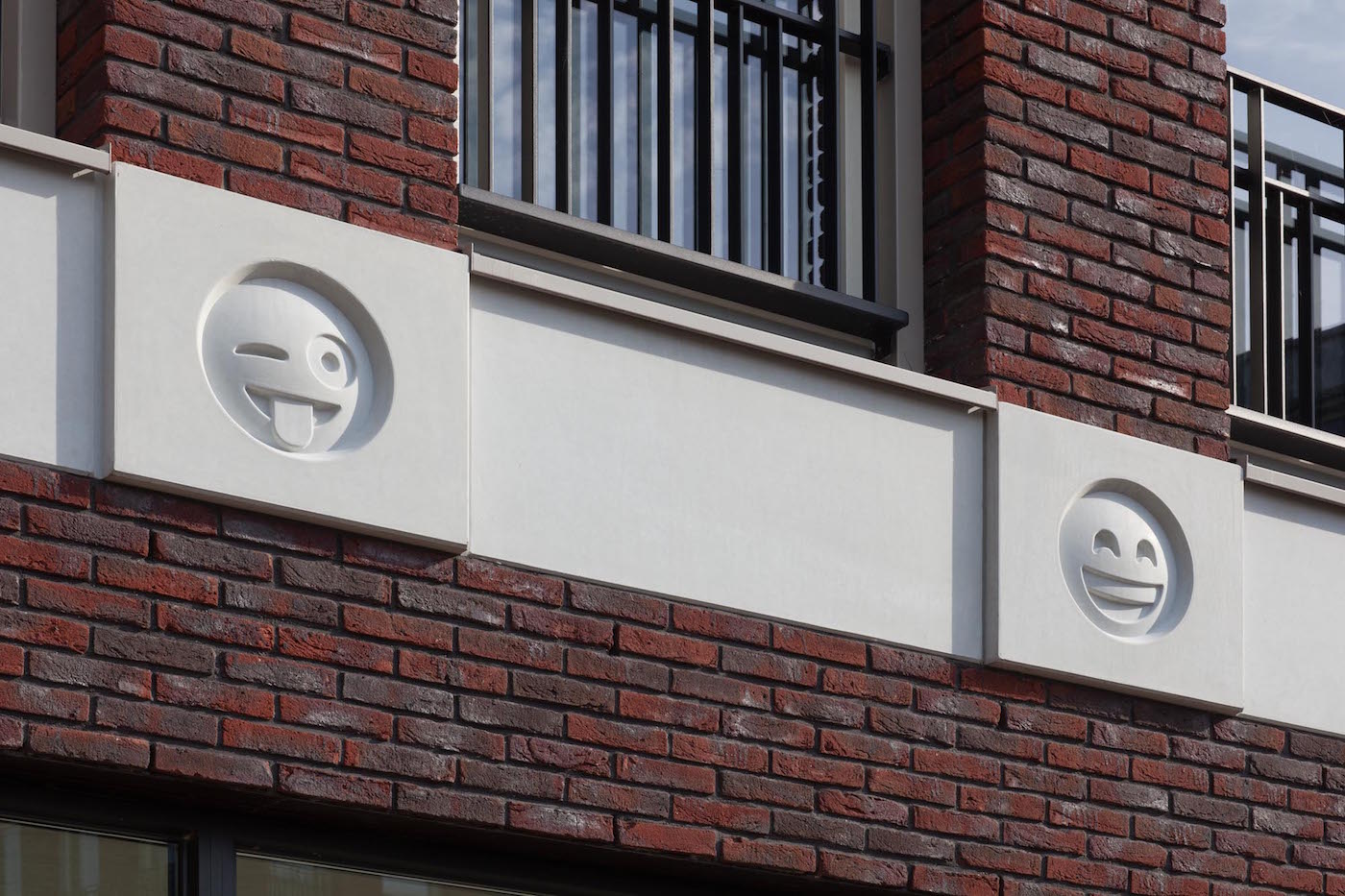
If there was ever any doubt that we’re living in the age of the emoji, it’s clearly behind us: A Dutch architect has incorporated the smiling faces into the facade of a building in the central Netherlands city of Amersfoort.
“With our architecture we always like to put in small details that makes the project a little bit more than a boring building,” said Attika Architekten architect Changiz Tehrani to the Verge. In this case, they’ve replaced traditional roundels with smiling emoji faces, elevating the popular texting symbols to the status of gargoyles.
Emoji on a building by Attika Architekten. Courtesy Attika Architekten/photographer Bart van Hoek.
Tehrani isn’t worried that the unusual architectural embellishment may someday make the project look dated—in fact, he’s counting on it.
Emoji on a building by Attika Architekten. Courtesy Attika Architekten/photographer Bart van Hoek.
“In classical architecture they used heads of the king or whatever, and they put that on the façade,” he explained. “So we were thinking, what can we use as an ornament so when you look at this building in 10 or 20 years you can say ‘hey this is from that year!’” Enter emoji.
The surprisingly subtle faces are only one facade of the building, which houses shops on the ground level with residential units on the upper floors.
Originally designed by Shigetaka Kurita and released by the Japanese company NTT DoCoMo in 1999, emojis started out as 176 very basic 12 by 12 pixel designs (which are now in the collection of New York’s Museum of Modern Art). The set has since grown to include 1,088 symbols, with everything from a wad of money with wings to a top hat, ready to serve your every texting need.
Changiz Tehrani of Attika Architekten with a concrete emoji mold. Courtesy Attika Architekten/photographer Bart van Hoek.
The cast of emoji characters is about to get even bigger, with 69 new symbols slated to join the fray sometime this year. Additions include gender-neutral faces and a woman breastfeeding, proving that emoji creators are paying attention to timely issues.
The Attika Architekten project, which was completed in 2015, opted to use more archetypal emojis, sticking to the classic faces, which they felt were the most expressive and recognizable. The firm created 3-D models of the symbols, and then cast them in concrete using a mold. The result is a fun, quirky building that offers a uniquely playful response to 21st-century life.